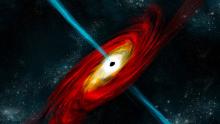Making the most of mathematical modelling

Powerful mathematical modelling and simulation systems are being made accessible to all by an EU-funded project that is driving innovation aimed at addressing societal and environmental challenges.

Powerful mathematical modelling and simulation systems are being made accessible to all by an EU-funded project that is driving innovation aimed at addressing societal and environmental challenges.

A loan backed by the InnovFin-EU finance for innovators initiative under the EU's Horizon 2020 programme and the European Investment Bank (EIB) is supporting construction of the European Spallation Source (ESS) research centre. Its powerful neutron beams will open up opportunities for researchers in a range of disciplines.

Under the InnovFin Large Projects facility, a CHF 250-million loan has been provided to increase the capacity of the High Luminosity Large Hadron Collider (HL-LHC), which is the European Organisation for Nuclear Research's (CERN) central project for the decade. The expansion will help open up new commercial possibilities and deepen understanding of our universe.

What do we mean by randomness? EU-funded researchers have come up with new insights into the nature of randomness that could ultimately have application in fields as diverse as lotteries and cryptography.

By developing gender-inclusive guidelines and criteria for schools, museums, science centres and industry, an EU-funded project aims to attract more young people, especially girls, to careers in science, technology, engineering and mathematics (STEM).

EU-funded researchers have uncovered how venomous sea snails manufacture organic molecules with important applications in treatments for pain relief and diabetes. This basic research also offers unexpected, new insights into the field of cell biology.

The next generation of particle colliders will demand unprecedented precision in the alignment of their components. EU-funded researchers have pushed the limits with new techniques for the accurate positioning of scientific equipment.

Astrophysics is where the stars meet their makers, literally and perhaps metaphorically too, as young researchers in an EU-funded project have boosted their careers delving into the origins, behaviour and evolution of black holes. The project has led to new tools and discoveries about how matter is treated in space and time - keeping Europe at the forefront of space research.

The detection of gravitational waves in 2015 provided groundbreaking information about the Universe. Building on this discovery, EU-funded scientists have now detected waves at three observatories, a first in astrophysics, making it possible to locate the signals’ origin and better apply the data they provide.

A group of 15 early-stage researchers are receiving training at the interface between physics, applied mathematics and life sciences, providing them with unique skills of value to both industry and academia. The knowledge gained will be integrated to create a single software package.